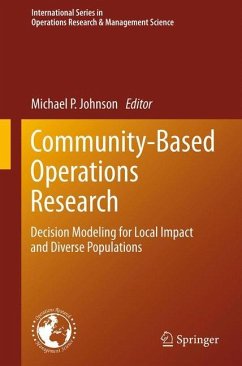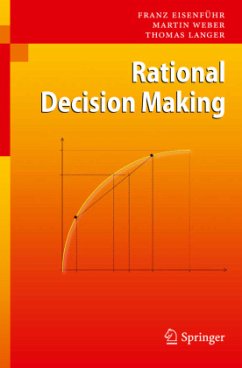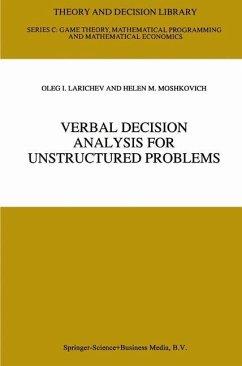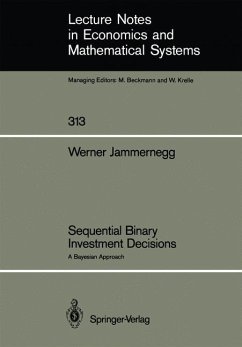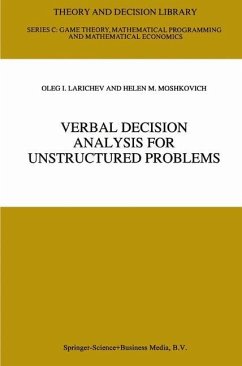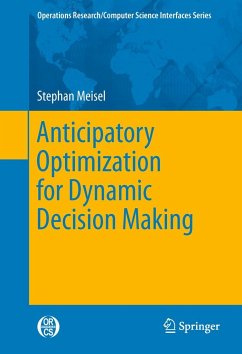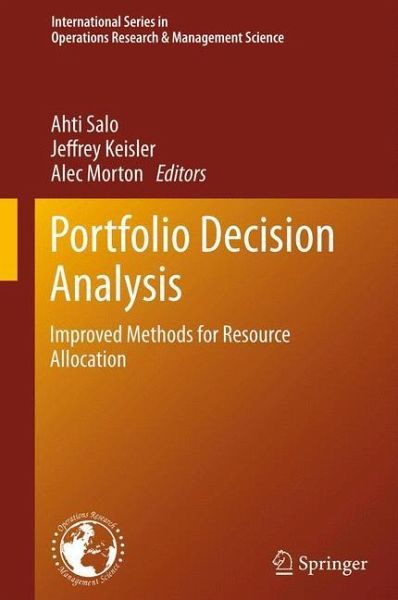
Portfolio Decision Analysis
Improved Methods for Resource Allocation
Herausgegeben: Salo, Ahti; Keisler, Jeffrey; Morton, Alec

PAYBACK Punkte
87 °P sammeln!
Portfolio Decision Analysis: Improved Methods for Resource Allocation provides an extensive, up-to-date coverage of decision analytic methods which help firms and public organizations allocate resources to 'lumpy' investment opportunities while explicitly recognizing relevant financial and non-financial evaluation criteria and the presence of alternative investment opportunities. In particular, it discusses the evolution of these methods, presents new methodological advances and illustrates their use across several application domains.The book offers a many-faceted treatment of portfolio decis...
Portfolio Decision Analysis: Improved Methods for Resource Allocation provides an extensive, up-to-date coverage of decision analytic methods which help firms and public organizations allocate resources to 'lumpy' investment opportunities while explicitly recognizing relevant financial and non-financial evaluation criteria and the presence of alternative investment opportunities. In particular, it discusses the evolution of these methods, presents new methodological advances and illustrates their use across several application domains.
The book offers a many-faceted treatment of portfolio decision analysis (PDA). Among other things, it (i) synthesizes the state-of-play in PDA, (ii) describes novel methodologies, (iii) fosters the deployment of these methodologies, and (iv) contributes to the strengthening of research on PDA. Portfolio problems are widely regarded as the single most important application context of decision analysis, and, with its extensive and unique coverage of these problems, this book is a much-needed addition to the literature. The book also presents innovative treatments of new methodological approaches and their uses in applications.
The intended audience consists of practitioners and researchers who wish to gain a good understanding of portfolio decision analysis and insights into how PDA methods can be leveraged in different application contexts. The book can also be employed in courses at the post-graduate level.
The book offers a many-faceted treatment of portfolio decision analysis (PDA). Among other things, it (i) synthesizes the state-of-play in PDA, (ii) describes novel methodologies, (iii) fosters the deployment of these methodologies, and (iv) contributes to the strengthening of research on PDA. Portfolio problems are widely regarded as the single most important application context of decision analysis, and, with its extensive and unique coverage of these problems, this book is a much-needed addition to the literature. The book also presents innovative treatments of new methodological approaches and their uses in applications.
The intended audience consists of practitioners and researchers who wish to gain a good understanding of portfolio decision analysis and insights into how PDA methods can be leveraged in different application contexts. The book can also be employed in courses at the post-graduate level.






